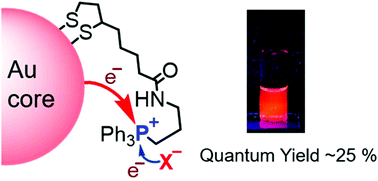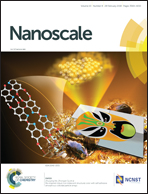Gold nanoclusters with bright near-infrared photoluminescence†
Abstract
The increase in nonradiative pathways with decreasing emission energy reduces the luminescence quantum yield (QY) of near-infrared photoluminescent (NIR PL) metal nanoclusters. Efficient surface ligand chemistry can significantly improve the luminescence QY of NIR PL metal nanoclusters. In contrast to the widely reported but modestly effective thiolate ligand-to-metal core charge transfer, we show that metal-to-ligand charge transfer (MLCT) can be used to greatly enhance the luminescence QY of NIR PL gold nanoclusters (AuNCs). We synthesized water-soluble and colloidally stable NIR PL AuNCs with unprecedentedly high QY (∼25%) upon introduction of triphenylphosphonium moieties into the surface capping layer. By using a combination of spectroscopic and theoretical methods, we provide evidence for gold core-to-ligand charge transfer occurring in AuNCs. We envision that this work can stimulate the development of these unusually bright AuNCs for promising optoelectronic, bioimaging, and other applications.



 Please wait while we load your content...
Please wait while we load your content...